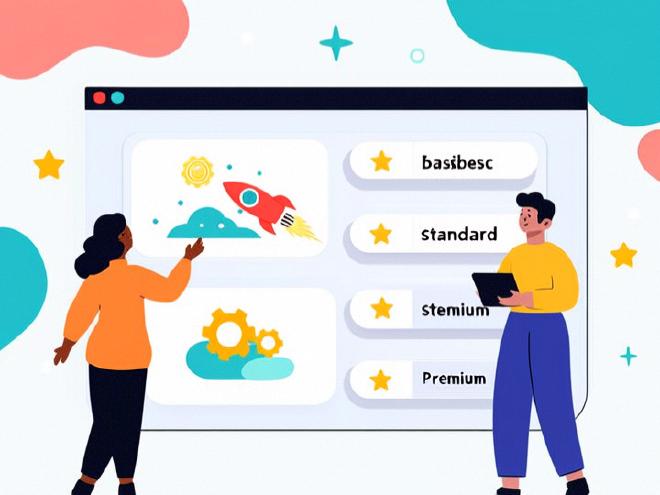How to Boost Freelancers' Income Through Pricing Strategies
Table of Contents
How to Boost Freelancers’ Income Through Pricing Strategies #
Have you ever found yourself stuck in pricing dilemmas—hesitating to set rates that are too high and risk scaring off clients, yet feeling undervalued when your quotes are too low compared to the time and skills you’ve invested? This is a common challenge faced by many freelancers, especially during their early stages. A well-crafted pricing strategy not only boosts your income but also helps establish a strong professional image. In this article, we’ll explore various angles on how to develop a strategic pricing approach, empowering you to achieve both revenue growth and business advancement.
I. Why Do Freelancers Often Underestimate Their Value? #
Many freelancers, especially when first starting out, tend to adopt a low-price strategy, driven by goals like “gaining experience” or “quickly acquiring clients.” However, this approach can lead to several long-term issues:
- Weakening Professional Credibility: Charging too little may make clients doubt the quality of your services.
- Reducing Profit Margins: While working long hours, your earnings remain limited, making it difficult to invest in continuous learning and skill enhancement.
- Misaligned Client Expectations: Clients who pay less often become more demanding, with higher expectations for after-sales support.
Therefore, accurately assessing your market value is the first step toward developing an effective pricing strategy.
II. Three Core Elements for Crafting a Pricing Strategy #
1. Conduct Thorough Market Research to Understand Industry Standards #

Before setting your rates, make sure to gather these key insights:
- Market Prices for Similar Services: Check average quotes on platforms like Upwork, Fiverr, or Zhubajie Network.
- Client Budget Ranges: Different industries have varying budget constraints; for instance, tech companies typically have broader budgets than traditional businesses.
- Your Unique Selling Points: If you possess specialized skills, successful case studies, or industry-specific expertise, these can justify premium pricing.
Expert Tip: Start with the market average as your baseline, then fine-tune your rates upward based on your unique experience and achievements.
2. Offer Multiple Pricing Options to Meet Diverse Client Needs #
Relying on a single pricing model often limits your ability to cater to all types of clients. Consider providing the following options:
- Basic Package: Ideal for clients with tight budgets, offering concise and straightforward services.
- Standard Package: A popular choice among most clients, balancing cost-effectiveness with comprehensive deliverables.
- Customized Package: Designed for high-end clients seeking personalized services, allowing you to charge premium rates while emphasizing added value.
This approach not only broadens your client base but also encourages clients to opt for higher-value packages through thoughtful tiered offerings.
3. Set Realistic Expectations to Avoid Falling Into Price Wars #
Freelancers should steer clear of the vicious cycle of “low prices for more orders.” Here’s how you can set appropriate expectations:
- Clearly Define Service Boundaries: Clearly outline what’s included in your quote and what requires additional fees.
- Highlight Outcome-Oriented Results: Use case studies to demonstrate the tangible benefits your services can deliver to clients.
- Establish Minimum Engagement Thresholds: For example, avoid taking on projects below a certain price point to ensure you attract higher-quality clients.
III. How to Continuously Optimize Your Pricing Strategy? #
Pricing isn’t a one-time decision—it’s an ongoing process that requires regular adjustments. Here are some practical tips:
- Review and Adjust Rates Every 6–12 Months: Fine-tune your pricing based on evolving market conditions and personal experiences.
- Gather Client Feedback: Understand how clients perceive your pricing and whether they’re satisfied with the value you provide.
- Experiment with Different Pricing Models: Test models like project-based pricing, hourly billing, or subscription-based plans to identify what works best for you.
- Stay Attuned to Industry Trends: Keep an eye on how emerging tools, such as AI-powered solutions, might impact demand for specific services.
Conclusion: Pricing Is More Than Just Numbers—it Reflects Your Value #

A well-designed pricing strategy isn’t just about maximizing income—it’s also about enhancing your professional reputation and ensuring sustainable growth as a freelancer. Start by conducting thorough market research, leverage your unique strengths to craft flexible pricing structures, and continuously refine your approach. Over time, you’ll break free from the trap of low-cost competition and unlock new levels of both financial success and influence.
Ready to reassess your pricing strategy today? Your expertise and hard work deserve to be rewarded more effectively!
Call to Action: If you’re looking for more strategies and tools to help you grow as a freelancer, subscribe to our career development guide for actionable tips and insights.